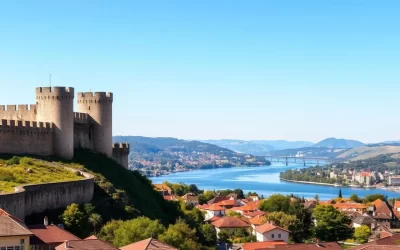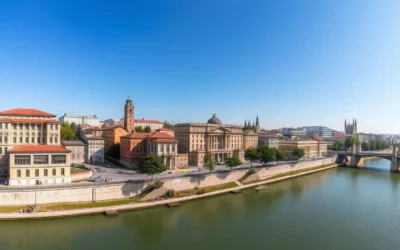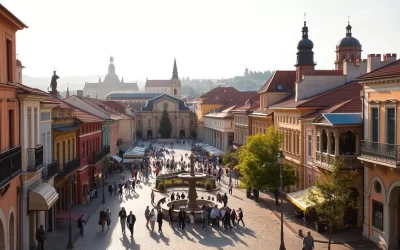✓ Accommodations✓ Flights✓ Rental Cars✓ Tours & Activities ✓ Tours & Activities
When you think about the linguistic diversity of a country, Serbia stands out as a fascinating example. The official language here is Serbian, which is unique for its use of both Cyrillic and Latin scripts. This dual script system is deeply embedded in everyday life, from street signs to official documents.
Beyond Serbian, the country is home to a rich tapestry of minority languages. In total, fifteen minority languages are officially recognized, adding to the cultural richness of the region. These languages are not just spoken at home but are also used in official capacities in areas where the minority population exceeds certain thresholds.
Understanding the linguistic landscape of Serbia offers insights into how language shapes identity and communication. Whether you’re curious about the dialects or the role of language in local administration, this article will guide you through the essentials. Stay tuned as we delve deeper into the history, scripts, and social impact of these languages.
Introduction to Serbia’s Linguistic Landscape
Dive into a world where multiple scripts and dialects coexist harmoniously. This region’s linguistic diversity reflects centuries of historical evolution and modern education practices. From ancient influences to contemporary media, language here is a living testament to cultural richness.
Discovering a Country of Diversity
Over the years, this area has become a melting pot of languages and dialects. Historical shifts, such as the Ottoman Empire’s influence, introduced Turkish, Persian, and Arabic loanwords. Today, the population speaks a variety of languages, including minority ones like Hungarian, Bosnian, and Romani.
Education and media play a key role in preserving this diversity. Schools teach both official and minority languages, ensuring they thrive for future generations. Media outlets broadcast in multiple languages, catering to diverse communities.

Why Language Matters to You
Understanding this linguistic landscape is essential for anyone visiting or interacting with the region. It helps you connect with locals, appreciate cultural nuances, and navigate daily life more effectively. For example, knowing basic phrases in the local language can make your experience more enriching.
Here’s a quick comparison of historical and contemporary language practices:
| Aspect | Historical Practices | Modern Practices |
|---|---|---|
| Scripts | Primarily Cyrillic | Cyrillic and Latin |
| Education | Limited to official language | Includes minority languages |
| Media | Localized content | Multilingual broadcasts |
Whether you’re a traveler, student, or language enthusiast, exploring this linguistic diversity offers a unique perspective. It’s a journey through history, culture, and identity that you won’t forget.
Understanding the Official Serbian Language
Exploring the linguistic framework of this region reveals a unique duality in its writing systems. The Serbian language stands out for its use of both Cyrillic and Latin scripts, a feature deeply rooted in its cultural and historical evolution.
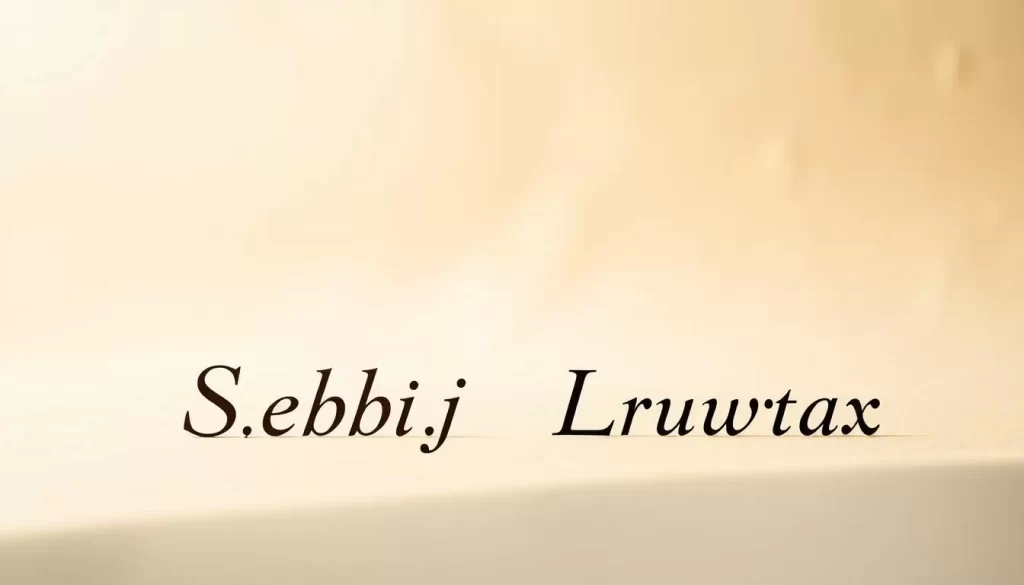
Cyrillic and Latin: A Dual Writing System
The official language here is written in two scripts: Cyrillic and Latin. This dual system is not just a modern convenience but a reflection of centuries of linguistic development. While Cyrillic is traditionally dominant, Latin script is equally accepted and widely used.
This dual-script approach allows for flexibility in communication. Street signs, official documents, and media often use both scripts, ensuring accessibility for all. It’s a unique feature that sets the Serbian language apart from others in the region.
History and Evolution of Serbian
The Serbian language has evolved significantly over time. Its roots trace back to the standardized dialect forms of the Serbo-Croatian language, which played a crucial role in shaping its modern structure.
Historical influences, such as the Ottoman Empire, introduced foreign elements, but the language retained its core identity. Today, it serves as a bridge between the past and present, reflecting the region’s rich cultural heritage.
Understanding this evolution helps you appreciate the language’s role in shaping identity and communication. It’s more than just words; it’s a living testament to history and culture.
Minority Languages in Serbia: Heritage and Official Use
The linguistic tapestry of this region is woven with threads of diverse minority languages. These languages are not just a part of history but are actively used in education, administration, and daily life. From Hungarian in Vojvodina to Albanian in Presevo, each language tells a story of cultural resilience.
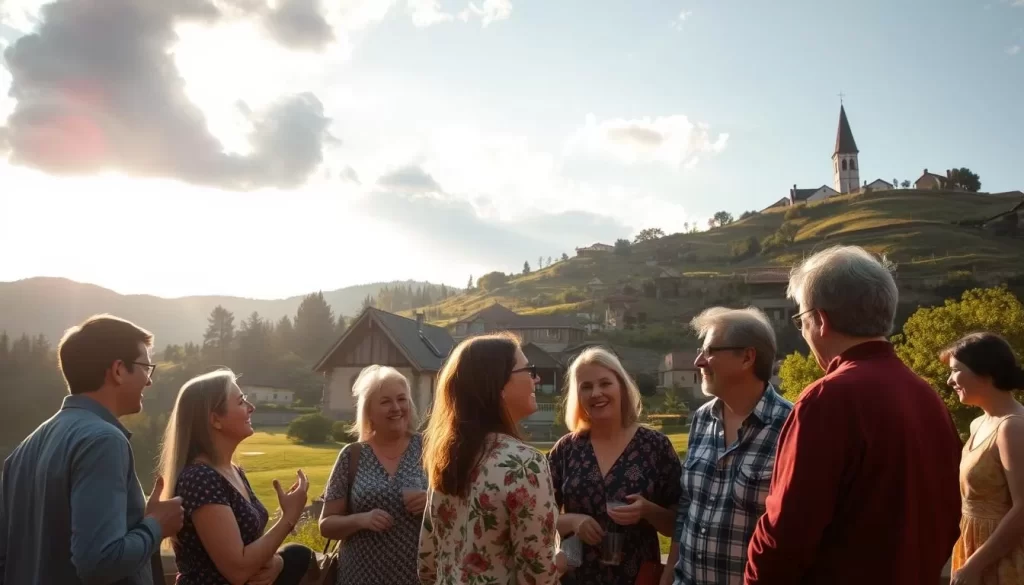
An Overview of the 15 Recognized Minority Languages
Fifteen minority languages are officially recognized, reflecting the region’s commitment to cultural diversity. These include Hungarian, Albanian, Bosnian, Romani, and Bunjevac, among others. Each language holds a special place in the communities where it is spoken.
In Vojvodina, Hungarian dominates, with schools and local governments using it extensively. Similarly, Albanian is prominent in areas like Presevo and Bujanovac, where it is integrated into education and administration.
Integration into Education and Administration
Schools play a crucial role in preserving these languages. In regions where a minority exceeds 15% of the population, their language is taught in schools. This ensures that younger generations stay connected to their heritage.
Local governments also use minority languages in official documents and services. This practice promotes inclusion and ensures that everyone has access to essential information.
Cultural Significance of Bunjevac
Recently, Bunjevac was added to the list of recognized minority languages. This decision highlights the importance of preserving even smaller linguistic communities. Bunjevac speakers now see their language celebrated in schools and public spaces.
Understanding these languages gives you a deeper appreciation of the region’s cultural richness. Whether you’re visiting or studying, recognizing their importance can enrich your experience.
Serbian in Everyday Life: Education, Media, and Communication
Language plays a vital role in shaping daily interactions and cultural identity. In this region, the official language is deeply integrated into education, media, and public administration. Understanding its practical applications can help you navigate daily life more effectively.

Language in Schools and Public Administration
From early childhood to secondary education, the official language is the primary medium of instruction. Schools emphasize bilingual literacy, teaching both Cyrillic and Latin scripts. This dual approach ensures students are well-prepared for diverse communication contexts.
Public administration also relies heavily on the official language. Government documents, signage, and communications are uniformly presented in Serbian. This practice promotes clarity and ensures everyone has access to essential information.
The Role of Media in Promoting Language Use
Media plays a significant part in reinforcing language use. National broadcasters prioritize Serbian-language programming, making it a central part of everyday life. Newspapers, magazines, and books published in Serbian encourage reading and literary engagement.
However, the influence of English is growing, especially in technology and youth culture. Terms like “kompjuter” are widely accepted, while “računar” is promoted as a more authentic alternative.
Challenges and Opportunities
Different age groups face unique challenges when accessing language resources. Younger generations may struggle with traditional scripts, while older individuals might find modern media less accessible. Language policies aim to address these gaps, fostering societal cohesion and effective governance.
Exploring Slavic Dialects and Serbo-Croatian Variations
The rich tapestry of Slavic dialects offers a fascinating glimpse into regional identities. These dialects are more than just variations; they reflect centuries of history and cultural evolution. Understanding them helps you appreciate the depth of linguistic diversity in this region.
Regional Dialects and Their Unique Flavors
Regional dialects in this area vary widely in pronunciation, vocabulary, and usage. For example, the Šumadija-Vojvodina dialect differs significantly from the Torlakian dialect in the south. These differences highlight the unique type of linguistic evolution each region has undergone.
Historical influences, such as Ottoman rule, have left their mark on these dialects. Words like “ćevapi” (grilled meat) and “baklava” (dessert) are examples of how foreign elements enrich the native language.
Mutual Intelligibility Among Neighboring Languages
Mutual intelligibility is a key feature of Slavic dialects. Serbian, Croatian, and Bosnian speakers can often understand each other despite minor differences. This shared understanding stems from their common roots in the Serbo-Croatian language spoken across the region.
For instance, the word for “apple” is “jabuka” in Croatian, “jabuska” in Serbian, and “jabuča” in Montenegrin. These similarities make communication easier while preserving regional identity.
Understanding these dialects not only enhances communication but also deepens your appreciation for the cultural pride tied to regional linguistic traditions. For more insights, explore this detailed analysis of South Slavic dialects.
Serbia: Official and widely spoken languages – Cultural and Social Impact
Language shapes how communities connect, preserving traditions while fostering unity. It’s more than a tool for communication; it’s a cornerstone of identity and heritage. For different groups, language serves as a bridge between generations, keeping cultural pride alive.
Language as a Marker of Identity and Tradition
In this language country, words carry the weight of history. For many, speaking their native tongue is a way to honor their roots. It’s a fact that language often defines who we are and where we come from.
Over time, language has evolved, but its role in shaping identity remains constant. Whether it’s through storytelling, music, or daily conversations, it keeps traditions alive. This connection to heritage is especially important for minority groups, who use language to maintain their unique cultural practices.
The Role of Language in Cross-Cultural Communication
Language also plays a vital role in bringing people together. In a diverse language country, it fosters understanding and respect. Bilingual signage, media, and public displays are evidence of this cultural richness.
However, differences in language can sometimes create challenges. Over time, these challenges can either unite or divide communities. Yet, when embraced, they enrich conversations and promote social integration. This is a fact that highlights the power of language as a unifying force.
For more insights into how language influences national identity, explore this detailed overview.
Conclusion
Language is a powerful force that shapes identity and connects generations. The dual-script system of the official language reflects its rich history and cultural depth. This unique feature makes it stand out, offering flexibility in communication and preserving tradition.
Minority languages play a vital role in enriching the social fabric. With fifteen officially recognized, they highlight the region’s commitment to diversity. These languages are not just spoken but integrated into education and administration, ensuring their survival for future generations.
Understanding this linguistic landscape gives you a chance to appreciate the cultural pride tied to each dialect. It’s a reminder of how language can make a difference in personal and communal contexts. Exploring this diversity offers a unique perspective on history and identity.
For more insights into the region’s political and cultural evolution, check out this detailed report. It’s a journey through time that reveals the enduring bond between language and national identity.
The above is subject to change.
Check back often to TRAVEL.COM for the latest travel tips and deals.

